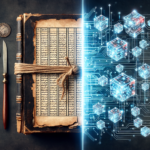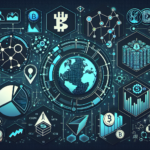The Evolution of Automated Trading Systems
Understanding Automated Trading
Automated trading, also known as algorithmic trading, refers to the use of computer algorithms to execute trades in financial markets. These systems analyze market data and make trading decisions at speeds and frequencies far beyond human capabilities. The evolution of technology has drastically transformed how trading is conducted, providing traders with tools that enhance efficiency and reduce market impact.
A Brief History
The roots of automated trading systems can be traced back to the 1970s when the first computerized trading platforms were developed. However, it wasn’t until the late 90s and early 2000s that these systems became widely adopted due to technological advancements in computing power and data analysis. The introduction of high-frequency trading (HFT) in the early 2000s revolutionized the market, where algorithms executed thousands of trades per second to capitalize on minute price fluctuations.
The Role of Artificial Intelligence
Artificial Intelligence (AI) has become a game-changer in the realm of automated trading systems. While traditional algorithms rely strictly on pre-defined rules, AI can adapt and learn from vast amounts of data, enabling more sophisticated decision-making processes.
The Impact of AI on Trading Strategies
Machine Learning and Predictive Analytics
Machine learning, a subset of AI, has introduced the capacity for predictive analytics in trading strategies. Unlike traditional models that require manual updates for every market change, machine learning algorithms utilize historical data to identify patterns and trends, continuously learning from new data. This capability allows for real-time adjustments, improving the accuracy of predictions and potentially leading to more profitable trades.
Sentiment Analysis
With the rise of social media and online news platforms, sentiment analysis has become a pivotal aspect of trading algorithms. AI can analyze the sentiment of news articles, social media posts, and other textual data to gauge public opinion and market sentiment. By integrating this information, traders can make informed decisions based on the emotions and reactions of market participants, potentially anticipating market movements before they occur.
Risk Management Enhancement
AI also plays a significant role in risk management within automated trading systems. Advanced algorithms can assess the risk profile of different assets, predict market volatility, and adjust trading strategies accordingly. This capability not only helps in reducing potential losses but also in optimizing portfolio performance by reallocating resources as market conditions fluctuate.
The Challenges Ahead for AI in Automated Trading
Data Quality and Quantity
For AI to function effectively in trading environments, it requires access to vast amounts of high-quality data. However, data can often be noisy, inconsistent, or incomplete. Ensuring the integrity of data is essential, as poor data quality can lead to inaccurate predictions and costly errors. The challenge lies in developing AI systems that can filter out noise and focus on relevant information.
Market Dynamics and Behavioral Economics
Financial markets are influenced by a myriad of factors, including economic indicators, geopolitical events, and human psychology. Although AI can analyze past data, it often struggles to incorporate the unpredictable nature of human behavior and market dynamics. Incorporating behavioral economics into AI models can enhance their predictive capabilities, but it remains a complex challenge.
Algorithmic Trading Regulations
As the use of AI in trading grows, so does the scrutiny from regulators. Authorities are increasingly concerned about market fairness, transparency, and the potential for systemic risks posed by automated trading systems. Traders and firms must navigate a shifting regulatory landscape while also pushing the boundaries of AI innovation.
The Future Landscape of AI in Automated Trading
Integration with Blockchain Technology
The integration of AI with blockchain technology has the potential to transform automated trading even further. Blockchain offers a secure, transparent, and decentralized way of executing trades, reducing the risk of fraud and errors associated with traditional trading platforms. AI algorithms could leverage these attributes to create more efficient trading strategies, enhancing transparency and trust in the financial system.
Enhanced Human-AI Collaboration
Rather than replacing human traders, the future may see AI acting as a sophisticated assistant. By combining human intuition and experience with AI’s analytical capabilities, traders can improve decision-making processes. This collaboration could lead to a more nuanced approach to trading that harnesses the strengths of both human and machine.
The Role of AI in Decentralized Finance (DeFi)
As decentralized finance (DeFi) continues to gain traction, AI’s ability to optimize trading strategies within these platforms will be crucial. Automated trading systems utilizing AI can navigate the complexities of DeFi, allowing for more efficient transactions and liquidity management. The integration of AI in DeFi could pave the way for new opportunities and innovations in the financial landscape.
The Skills and Knowledge Required for AI-Driven Trading
Programming and Data Science
Traders looking to delve into AI-based automated trading must build a strong foundation in programming and data science. Proficiency in programming languages such as Python and R is essential for developing and fine-tuning algorithms. Additionally, knowledge of statistical analysis and machine learning concepts will empower traders to harness the full potential of AI.
Continuous Learning and Adaptation
The world of AI and trading is constantly evolving. Therefore, traders must commit to continuous learning to stay ahead of the curve. Keeping abreast of the latest advancements in AI technology, market developments, and regulatory changes will be vital for success in this dynamic environment.
Networking and Collaboration
Collaborating with other professionals in the field can provide valuable insights and opportunities. Networking with data scientists, AI researchers, and other traders can foster a collaborative environment conducive to sharing ideas and innovative strategies. This exchange of knowledge can ultimately lead to improved trading performance and a deeper understanding of the complexities of AI in trading.
Final Thoughts on the Future of AI in Automated Trading
While the journey ahead for AI in automated trading is filled with challenges and complexities, the potential rewards are significant. The integration of AI will likely continue shaping the future landscape of financial markets, offering enhanced precision, risk management, and insights that can lead to improved trading strategies. Embracing these advancements in technology will be crucial for traders seeking to thrive in an increasingly automated world.








